
Copernical Team
The amazing new materials that hold the key to new space discoveries
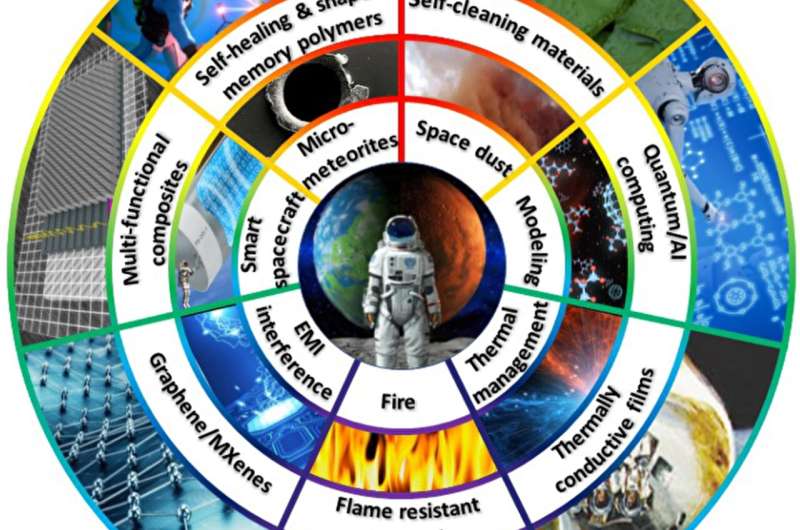
Space is a dangerous place. From micro-meteorites and electromagnetic interference to fires in space and extreme heat and cold, we need to develop new materials to enable the next generation of space travel and intergalactic travel.
New Swinburne research published in Advanced Composites and Hybrid Materials highlights the cutting-edge materials that are solving these problems, including those being developed by Swinburne's Multifunctional Materials and Composites team.
These include self-healing polymers, fire and thermally resistant materials, materials for thermal management, self-cleaning materials, EMI shielding materials and multifunctional carbon fiber composites.
Lead author and Swinburne Engineering Senior Lecturer Dr.
Engineers test printed electronics in space

Today's small spacecraft pack sensors, guidance and control, and operating electronics into every available space. Printing electronic circuits on the walls and structures of spacecraft could help future missions do more in smaller packages.
Engineers successfully tested hybrid printed circuits at the edge of space in an April 25 sounding rocket flight from NASA's Wallops Flight Facility near Chincoteague, Virginia. Electronic temperature and humidity sensors printed onto the payload bay door and onto two attached panels monitored the entire SubTEC-9 sounding rocket mission, recording data that was beamed to the ground.
NASA picks Lockheed Martin to develop nuclear rocket

NASA and the US military said Wednesday they had selected defense contractor Lockheed Martin to develop a nuclear powered rocket, with a view to using the technology for missions to Mars.
The Demonstration Rocket for Agile Cislunar Operations (DRACO) program may launch as soon as 2027, officials said on a call.
Nuclear thermal propulsion (NTP) systems could cut journey times, increase fuel efficiency, and require less propellant, meaning future spacecraft could carry larger payloads than today's best chemical rockets.
NTP works by pumping a liquid propellant, in DRACO's case cryogenic hydrogen, through a reactor core, where uranium atoms split apart through fission.
NASA's Juno is getting ever closer to Jupiter's moon Io
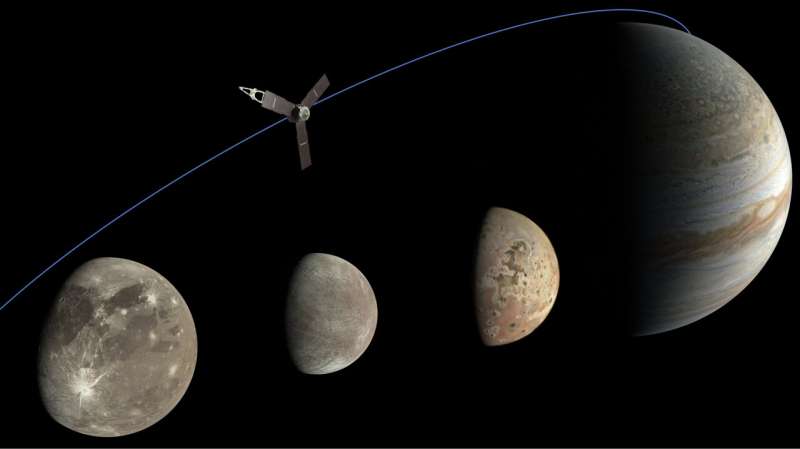
The spinning, solar-powered spacecraft will take another look of the fiery Jovian moon on July 30.
When NASA's Juno mission flies by Jupiter's fiery moon Io on Sunday, July 30, the spacecraft will be making its closest approach yet, coming within 13,700 miles (22,000 kilometers) of it.
Crew-7: crew news conference
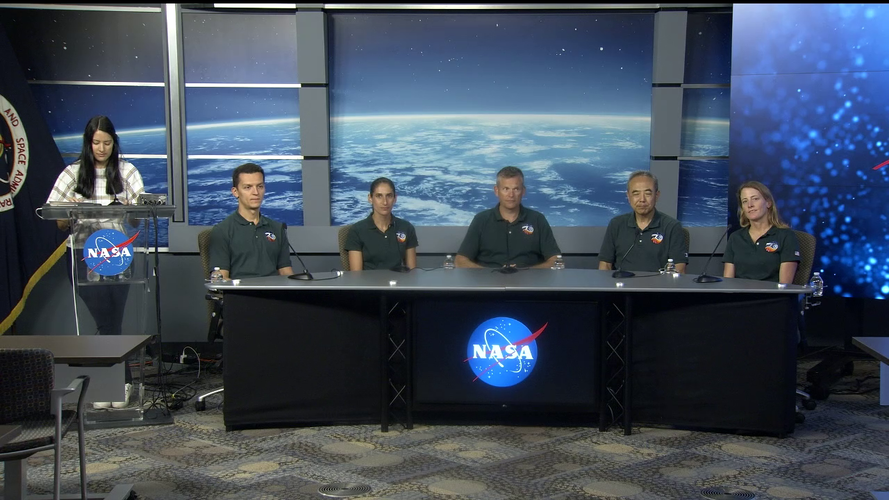 Video:
00:46:24
Video:
00:46:24
On Tuesday 25 July, the four crew members of Crew-7, Jasmin Moghbeli (NASA), Andreas Mogensen (ESA), Satoshi Furukawa (JAXA) and Konstantin Borisov (Roscosmos) hosted a news conference where they talk about their upcoming mission to the International Space Station.
Aeolus reentry: the breakdown
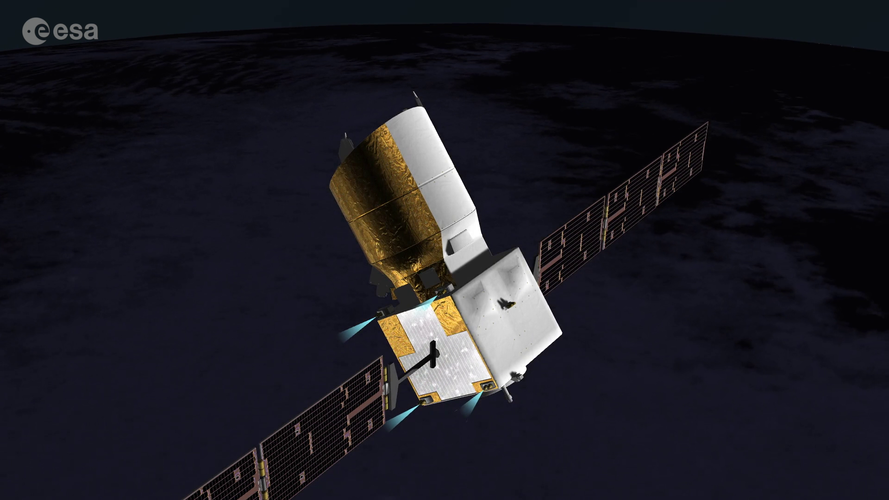 Video:
00:02:42
Video:
00:02:42
After a remarkable life in orbit, Aeolus is out of fuel and out of time – it’s returning to Earth this week. Planned and built before any regulations were put in place on ‘end-of-life’ disposal, the Earth Explorer was designed to naturally return through our atmosphere.
After months of detailed planning and analysis, ESA together with industrial partners has designed a complex and never-before-performed set of manoeuvres to control, as much as possible, Aeolus’ fall.
The assisted reentry attempt is built on four main phases, now begun at ESA’s mission control:
- Phase I: once Aeolus has fallen
Webb snaps detailed infrared image of actively forming stars
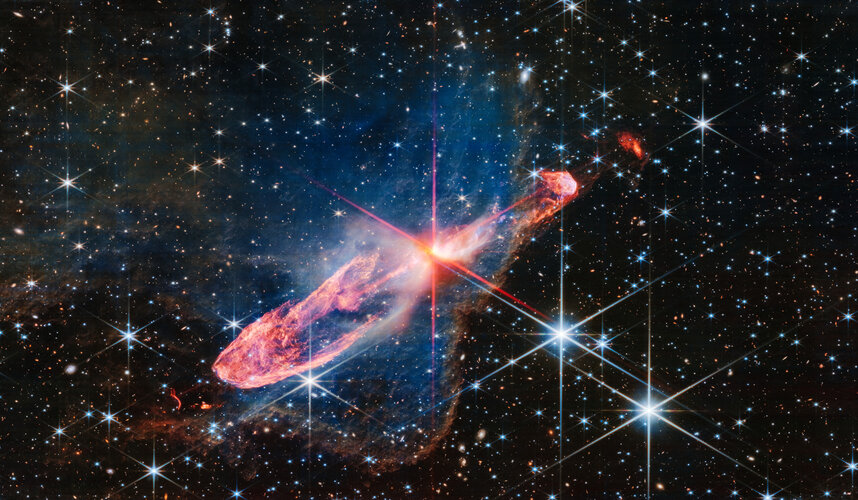 Image:
Webb snaps detailed infrared image of actively forming stars
Image:
Webb snaps detailed infrared image of actively forming stars Litli-Hrútur eruption seen from space
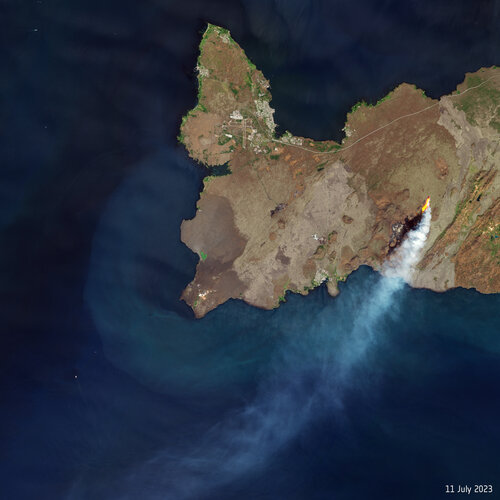
On 10 July 2023, a volcano some 30 km from Iceland’s capital, Reykjavik, erupted following heightened seismic activity in the area. Satellites orbiting above us have captured the molten lava and smoke plume puffing from the Litli-Hrútur volcano.
Breakthrough in rapid proton capture process unveils new reaction rate
 In an important breakthrough for nuclear astrophysics, an international team led by HOU Suqing from the Institute of Modern Physics of the Chinese Academy of Sciences has successfully derived a new reaction rate for a crucial component of the rapid proton capture process (rp-process). Their findings were recently published in The Astrophysical Journal.
Type I X-ray bursts, the most common
In an important breakthrough for nuclear astrophysics, an international team led by HOU Suqing from the Institute of Modern Physics of the Chinese Academy of Sciences has successfully derived a new reaction rate for a crucial component of the rapid proton capture process (rp-process). Their findings were recently published in The Astrophysical Journal.
Type I X-ray bursts, the most common AI and satellite imagery transform solar energy potential mapping in China
 China's pursuit of carbon neutrality has made a substantial advancement following a successful collaboration among leading research and meteorological organizations. The Chinese Academy of Sciences' Institute of Atmospheric Physics (IAP/CAS), the Harbin Institute of Technology (HIT), and the National Satellite Meteorological Center (MSMC) of the China Meteorological Administration have collectiv
China's pursuit of carbon neutrality has made a substantial advancement following a successful collaboration among leading research and meteorological organizations. The Chinese Academy of Sciences' Institute of Atmospheric Physics (IAP/CAS), the Harbin Institute of Technology (HIT), and the National Satellite Meteorological Center (MSMC) of the China Meteorological Administration have collectiv 